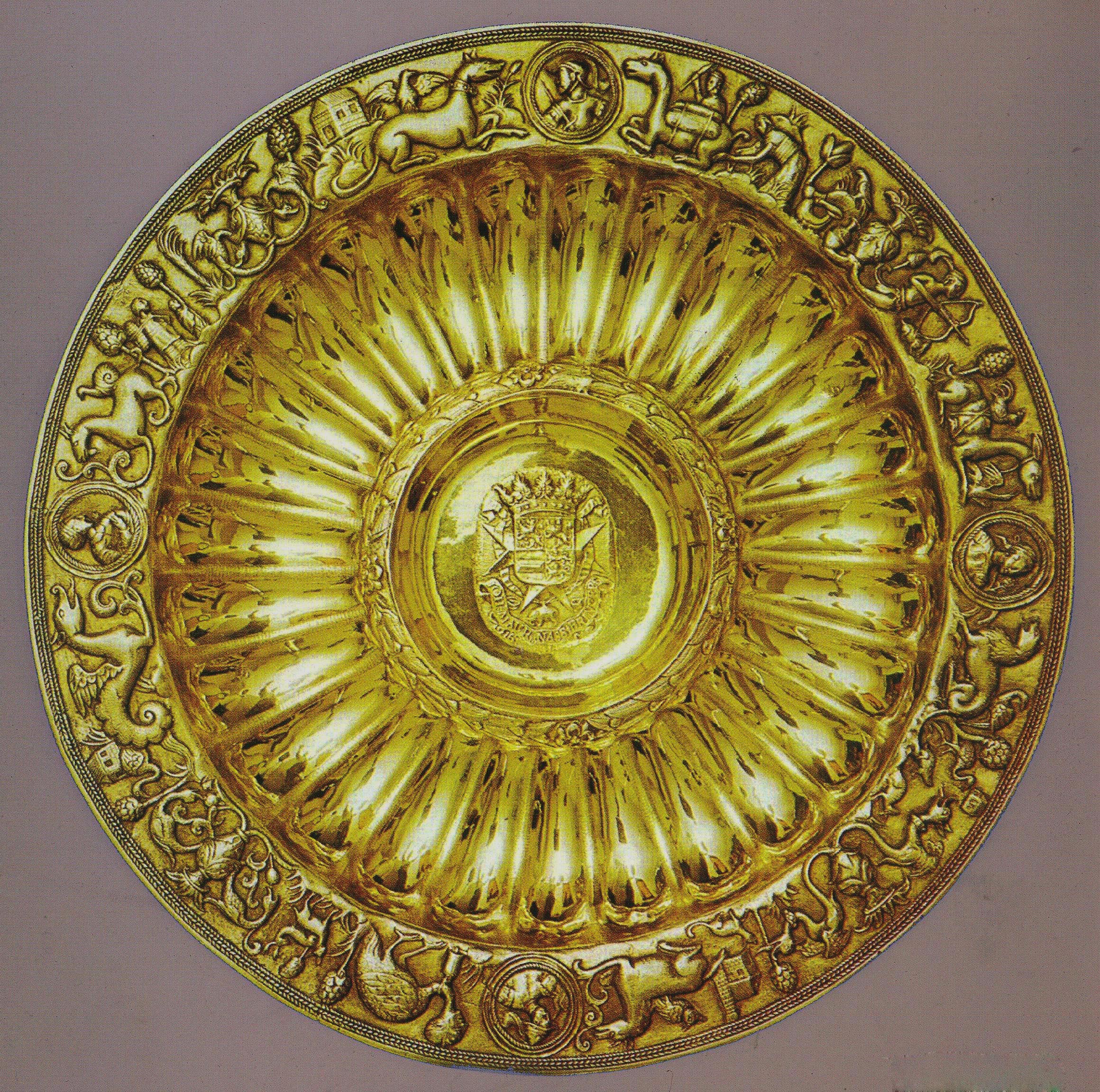This gilded silver baptismal basin held in the small Protestant church of Siegen, Germany, is 54 cm x 12.3 cm and weighs 5 kilograms, with a 7 cm wide frieze adorned with houses, animals, monsters, and four medals. A closer look at the frieze reveals a few tiny engravings in the form of crowns accompanied by the year 1586 and the initials of Philip II (1527–1598), King of Spain and Emperor of the Indies. The basin sports a 7.8 cm base with an inscription in Latin on the bottom, which translates as follows: ‘Johannn Maurits, Count of Nassau, inaugurated in 1658 for use in the Holy Baptism of the Reformed Church of Siegen this gift which he, as Governor of Brazil, received from the African king of Congo.’ The Siegen basin perfectly exemplifies the global connections that brought together Andean miners and metalworkers, European and American slave traders, and African rulers. The discovery and industrial development of silver mines at Potosí in the 1540s transformed the world economy, oiling the wheels of a global trade. Part of this trade, the Siegen silver basin made three transatlantic journeys. The silver content and the engravings of llamas suggest that the basin was made in Upper Peru, while the small crowns with the initials of Philip II suggest that it was used in the slave trade, where it served as payment to Portuguese merchants who in turn used it to pay African slaveholders for a shipment of slaves. This is likely how the basin ended up in the hands of the King of Congo. In May 1643, the King of Congo sent his representatives to Recife, offering Maurits 200 slaves, a necklace, and a silver basin. Upon returning to Europe in 1644, Maurits brought his collection of curiosities with him. In 1658 Maurits presented the basin to the Protestant Church in Siegen, where it rests today.
Silver basin
Mariana Françozo
Further reading
- de Alencastro, L.F. (2018) The Trade in the Living: The Formation of Brazil in the South Atlantic, Sixteenth to Seventeenth Centuries (Albany, NY: SUNY Press).
- Françozo, M. (2014) ‘Global connections: Johan Maurits of Nassau-Siegen’s collection of curiosities’, in The Legacy of Dutch Brazil, edited by M. van Groesen, 105–23 (New York, NY: Cambridge University Press).
- Lane, K. (2019) Potosí: The Silver City That Changed the World (Berkeley, CA: University of California Press).
- Muthmann, F. (1956) Die Silberne Taufschale zu Siegen: Ein Werk aus der spanischen Kolonialzeit Perus (Heidelberg: Winter).
- Schwartz, S. (2011) ‘The Iberian Atlantic to 1650’, in The Oxford Handbook of the Atlantic World 1450–1850, edited by N. Canny and P. Morgan, 147–64 (Oxford: Oxford University Press).
- Tentzel, W. (1693) Monatliche Unterredungen einiger Guten Freunde von Allerhand Büchern und andern annemlichen Geschichten (Leipzig: J.F. Gleditsch).





